Surface Charge Accumulation on Basin-Shape Insulator in Various Eco-Friendly Gases with Metal Particle Under AC Voltage
Abstract
1. Introduction
2. Materials and Methods
2.1. Sample and Experiment Platform
2.2. Test Procedure
3. Results
3.1. Effect of Metal Particles on Surface Charge Distribution
3.2. Effect of Proportion on Surface Charge Distribution with Metal Particle
3.3. Effect of Pressure on Surface Charge Distribution with Metal Particle
4. Discussion
5. Conclusions
- Few surface charges are accumulated on metal-particle-free samples, while charge spots will appear at both the convex surface and the corresponding area of the concave surface where the metal particle is placed under AC voltage, and the densities on the concave surface are lower. The charge spots detected in C4F7N/CO2 mixtures are negative, and those in compressed air are positive.
- At low pressure, with an increase in C4F7N proportion, the maximum surface charge density decreases, and the total quantity of the charges increases initially and decreases subsequently. When it comes to high pressure, with an increase in C4F7N proportion, both the maximum surface charge density and the total quantity of the charges increase sharply.
- With an increase in gas pressure, the maximum surface charge density in both atmospheres increases. The total quantity of both charges increases with pressure in C4F7N/CO2 mixtures, while a decrease in the total quantity of negative charges is observed with the increase of pressure in compressed air.
Author Contributions
Funding
Data Availability Statement
Conflicts of Interest
References
- Eriksson, A.; Pettersson, K.G.; Krenicky, A.; Baker, R.; Ochoa, J.R.; Leibold, A. Experience with gas insulated substations in the USA. IEEE Trans. Power Deliv. 1995, 10, 210–218. [Google Scholar] [CrossRef]
- Peng, P.; Ren, P.; Li, Q. Calculation method of thermal decomposition kinetic parameters of basin-type insulators in GIS. High Volt. Eng. 2020, 46, 3622–3629. [Google Scholar]
- Rachmawati; Kojima, H.; Kato, K.; Zebouchi, N.; Hayakawa, N. Electric Field Grading and Discharge Inception Voltage Improvement on HVDC GIS/GIL Spacer with Permittivity and Conductivity Graded Materials (ε/σ-FGM). IEEE Trans. Dielectr. Electr. Insul. 2022, 29, 1811–1817. [Google Scholar] [CrossRef]
- Zhang, B.; Ji, K.; Li, Y.; Tao, H.; Li, X.; Yao, X.; Nan, Z. Surface Charging Characteristics of a Real-Sized DC GIS Insulator in Pressurized Clean Air as a Feasible SF6 Alternative. IEEE Trans. Power Deliv. 2024, 39, 2149–2159. [Google Scholar] [CrossRef]
- Li, C.; Lin, C.; Yang, Y.; Zhang, B.; Liu, W.; Li, Q.; Hu, J.; He, S.; Liu, X.; He, J. Novel HVDC spacers by adaptively controlling surface charges—Part ii: Experiment. IEEE Trans. Dielectr. Electr. Insul. 2018, 25, 1248–1258. [Google Scholar] [CrossRef]
- Ji, H.-x.; Li, C.-r.; Pang, Z.-k.; Ma, G.-m.; Cui, X.-w.; Zeng, Z.-p.; Rong, Z.-h. Moving behaviors and harmfulness analysis of multiple linear metal particles in GIS. IEEE Trans. Dielectr. Electr. Insul. 2016, 23, 3355–3363. [Google Scholar] [CrossRef]
- Qi, B.; Gao, C.; Liu, S.; Zhao, L.; Li, C. Surface charge distribution on GIS insulator under DC/AC voltage. IEEE Trans. Dielectr. Electr. Insul. 2017, 24, 3173–3181. [Google Scholar] [CrossRef]
- Wang, J.; Li, B.; Li, Q.; Liu, S.; Ma, G. Impact of linear metal particle on surface charge accumulation of post insulator within DC GIL. Trans. China Electrotech. Soc. 2016, 31, 213–222. [Google Scholar]
- Wang, H.; Xue, J.Y.; Guo, B.H.; Deng, J.B.; Zhang, G.J. Comparison of time-dependent variation of surface charge accumulation in SF6/N2 and pure SF6. In Proceedings of the 2018 12th International Conference on the Properties and Applications of Dielectric Materials (ICPADM), Xi’an, China, 20–24 May 2018; pp. 1082–1085. [Google Scholar]
- Du, W.; Zhao, Z.; Li, X.; Cao, C. The Influence of Gas Pressure and Voltage on Surface Charge Behavior of Basin Type Insulator. In Proceedings of the 2020 IEEE 1st China International Youth Conference on Electrical Engineering (CIYCEE), Wuhan, China, 1–4 November 2020; pp. 1–5. [Google Scholar]
- Rokunohe, T.; Yagihashi, Y.; Endo, F.; Oomori, T. Fundamental insulation characteristics of air; N2, CO2, N2/O2, and SF6/N2 mixed gases. Electr. Eng. Jpn. 2005, 155, 9–17. [Google Scholar] [CrossRef]
- Li, Z.; Ding, W.; Liu, Y.; Li, Y.; Zheng, Z.; Liu, W.; Gao, K. Surface flashover characteristics of epoxy insulator in C4F7N/CO2 mixtures in a uniform field under AC voltage. IEEE Trans. Dielectr. Electr. Insul. 2019, 26, 1065–1072. [Google Scholar] [CrossRef]
- Li, Z.; Zheng, Z.; Liu, Y.; Ding, W.; Li, X. Surface flashover characteristics of the 252 kV conical insulator in C4F7N/CO2 gas mixtures under AC voltage. Trans. China Electrotech. Soc. 2020, 35, 62–69. [Google Scholar]
- Dong, J.; Chen, J.; Li, J.; Li, W.; Liu, J.; Deng, J.; Zhang, G. Surface Charge Accumulation Characteristics of Epoxy Composite Insulator in C4F7N/CO2 Mixture Under DC Voltage. Proc. CSEE 2022, 42, 6521–6532. [Google Scholar] [CrossRef]
- Gao, Y.; Wang, H.; Yuan, X.; Zhao, H.; Li, Z. Surface Charge Accumulation on a Real Size Epoxy Insulator with Bouncing Metal Particle Under DC Voltage. IEEE Trans. Plasma Sci. 2021, 49, 2166–2175. [Google Scholar] [CrossRef]
- Morcos, M.M.; Zhang, S.; Srivastava, K.D.; Gubanski, S.M. Dynamics of metallic particle contaminants in GIS with dielectric-coated electrodes. IEEE Trans. Power Deliv. 2000, 15, 455–460. [Google Scholar] [CrossRef]
- Lu, D.; Gao, Y.; Li, S.; Huang, P.; Liu, B.; Du, B. Effect of Metal Particle Position in Surface Charge Accumulation on DC GIS Insulator. In Proceedings of the 2024 3rd International Conference on Power Systems and Electrical Technology (PSET), Tokyo, Japan, 5–8 August 2024; pp. 504–508. [Google Scholar]
- Li, S.; Gao, Y.; Lu, D.; Huang, P.; Du, B. Phase Dependence of Surface Charge Measurement on Epoxy Insulator in C4F7N/CO2 under AC Voltage. Polymers 2024, 16, 2585. [Google Scholar] [CrossRef] [PubMed]
- Li, Q.; Naderiallaf, H.; Lei, Z.; Wang, Y.; Liu, P.; Zhang, L.; Wang, Z.; Zhang, Z. Surface charge pattern analysis based on the field-dependent charging theory: A review. IEEE Trans. Dielectr. Electr. Insul. 2020, 27, 257–269. [Google Scholar] [CrossRef]
- Gao, Y.; Wang, H.; Li, Z.; Yuan, X.; Zhao, H. Gaseous Ionization Dependence of Surface Charge Pattern on Epoxy Insulator with Complex Surface Profile Under DC Voltage. IEEE Trans. Plasma Sci. 2021, 49, 1627–1635. [Google Scholar] [CrossRef]
- Li, D.; Zhang, G.; Wang, T.; Hou, Y. Charge accumulation characteristic on polymer insulator surface under AC voltage in air and C4F7N/CO2 mixtures. High Volt. 2020, 5, 160–165. [Google Scholar] [CrossRef]
- Dhofir, M.; Hasanah, R.N.; Martineac, C. Electron Bombardment of Nitrogen Gas Ionization in a DC Electric Field. In Proceedings of the 2020 10th Electrical Power, Electronics, Communications, Controls and Informatics Seminar (EECCIS), Malang, Indonesia, 26–28 August 2020; pp. 76–80. [Google Scholar]
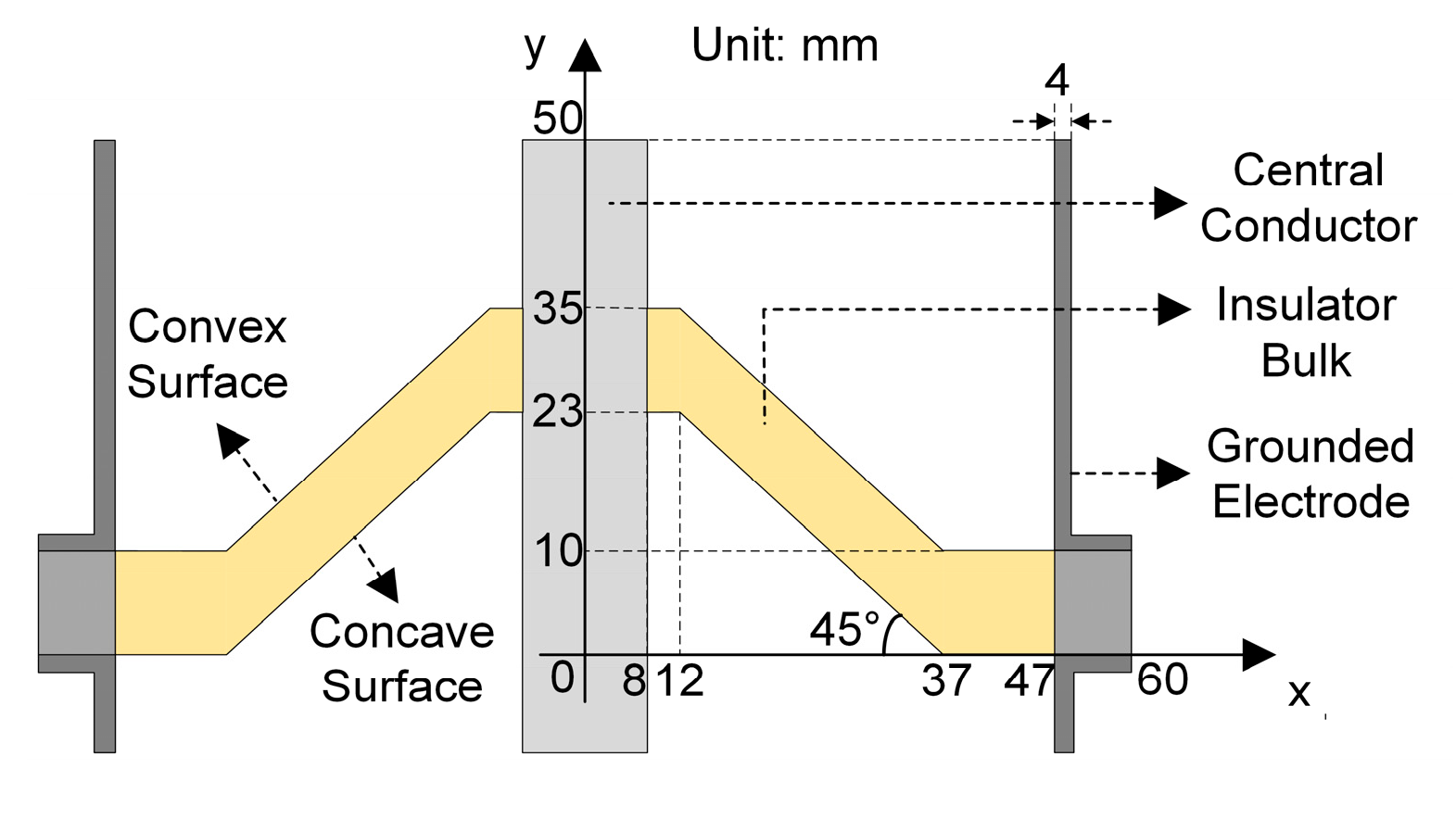
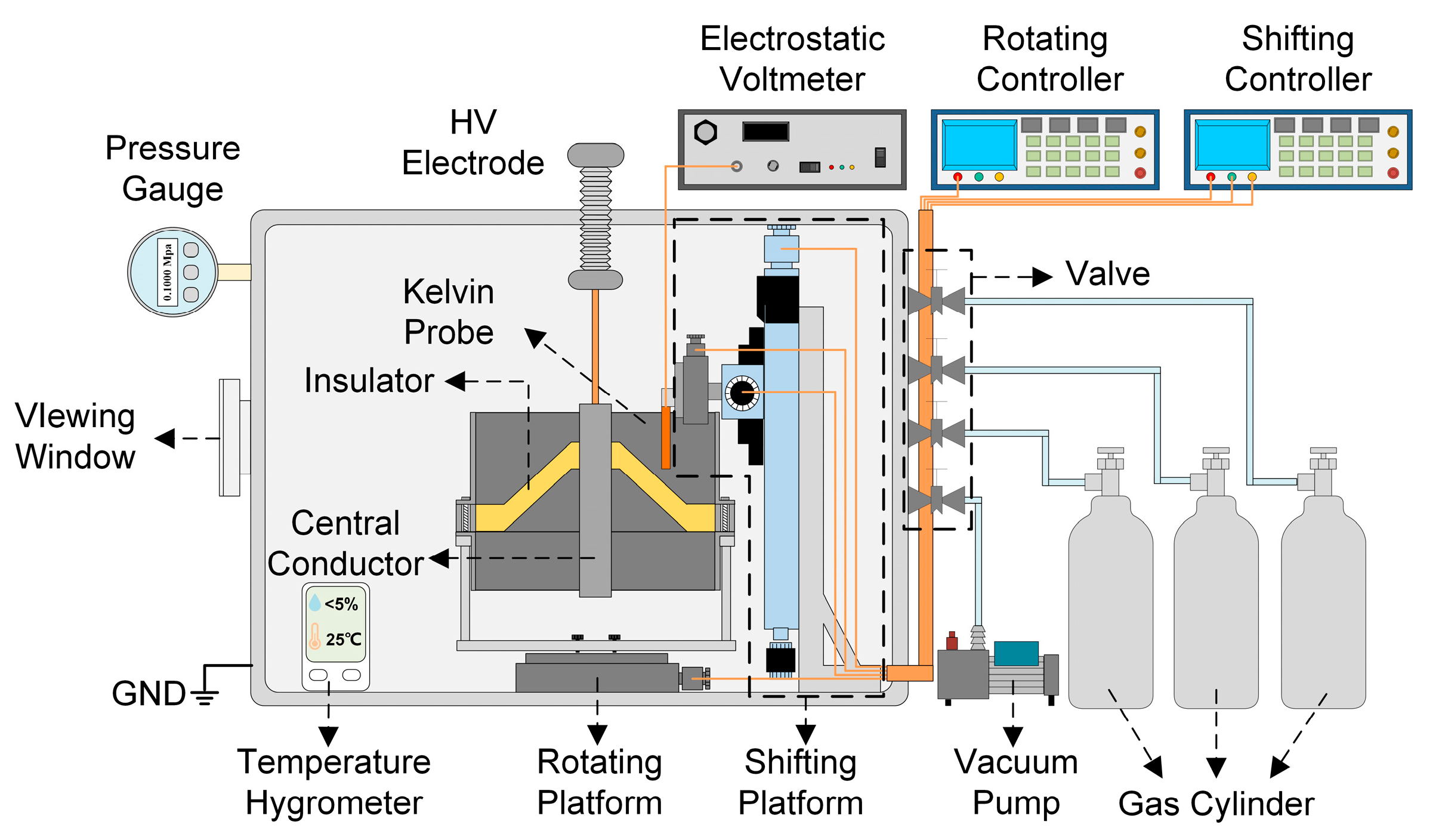
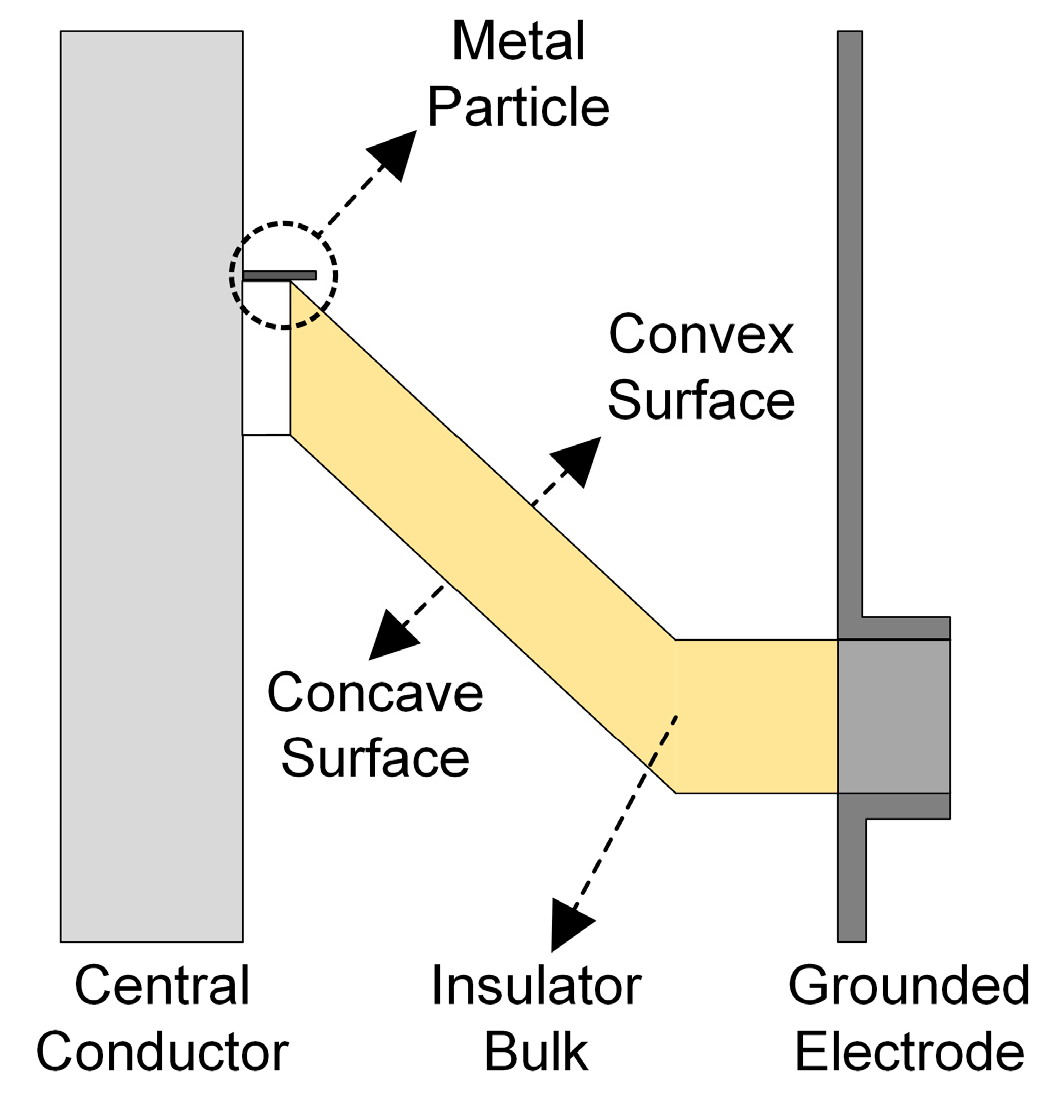
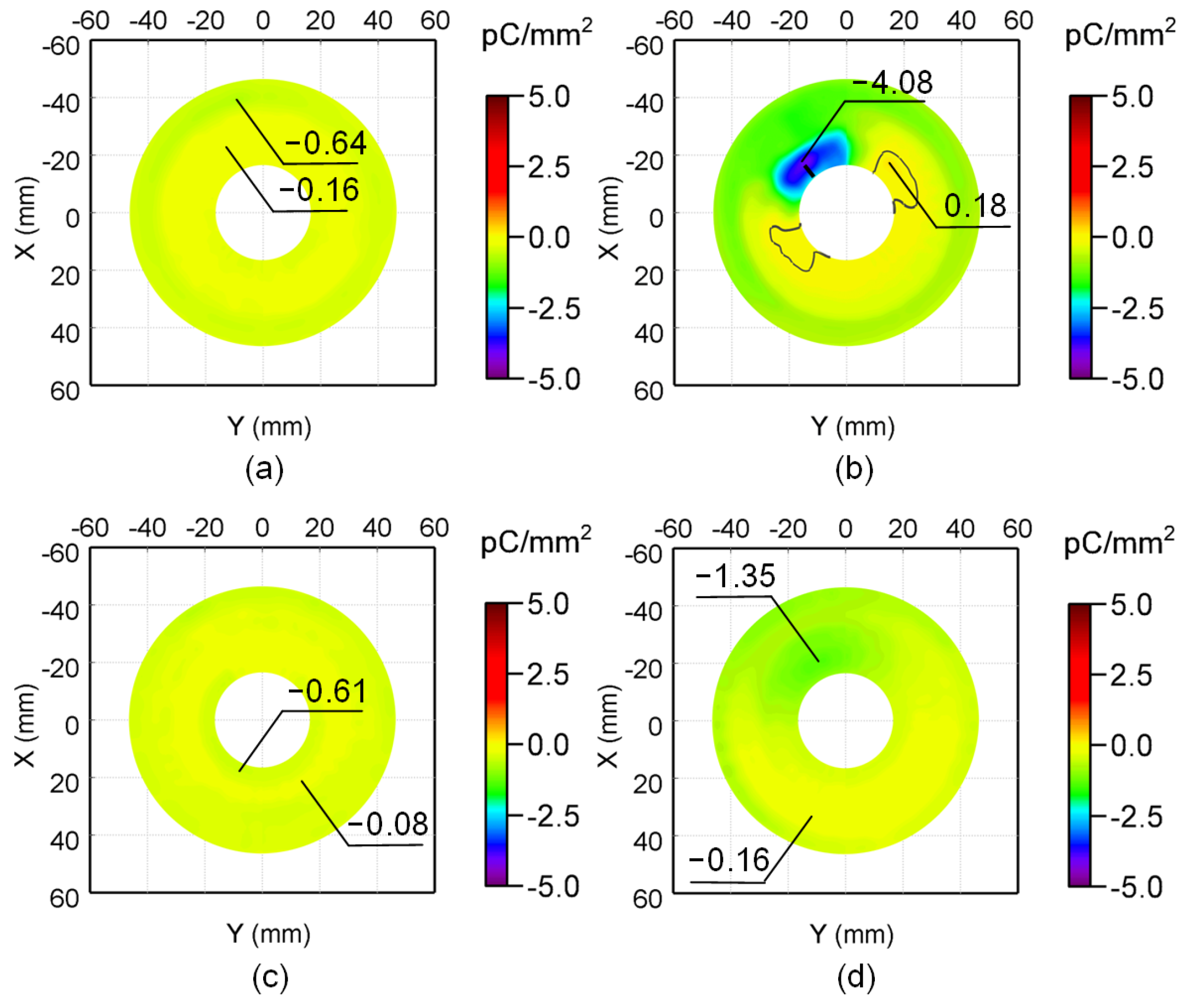
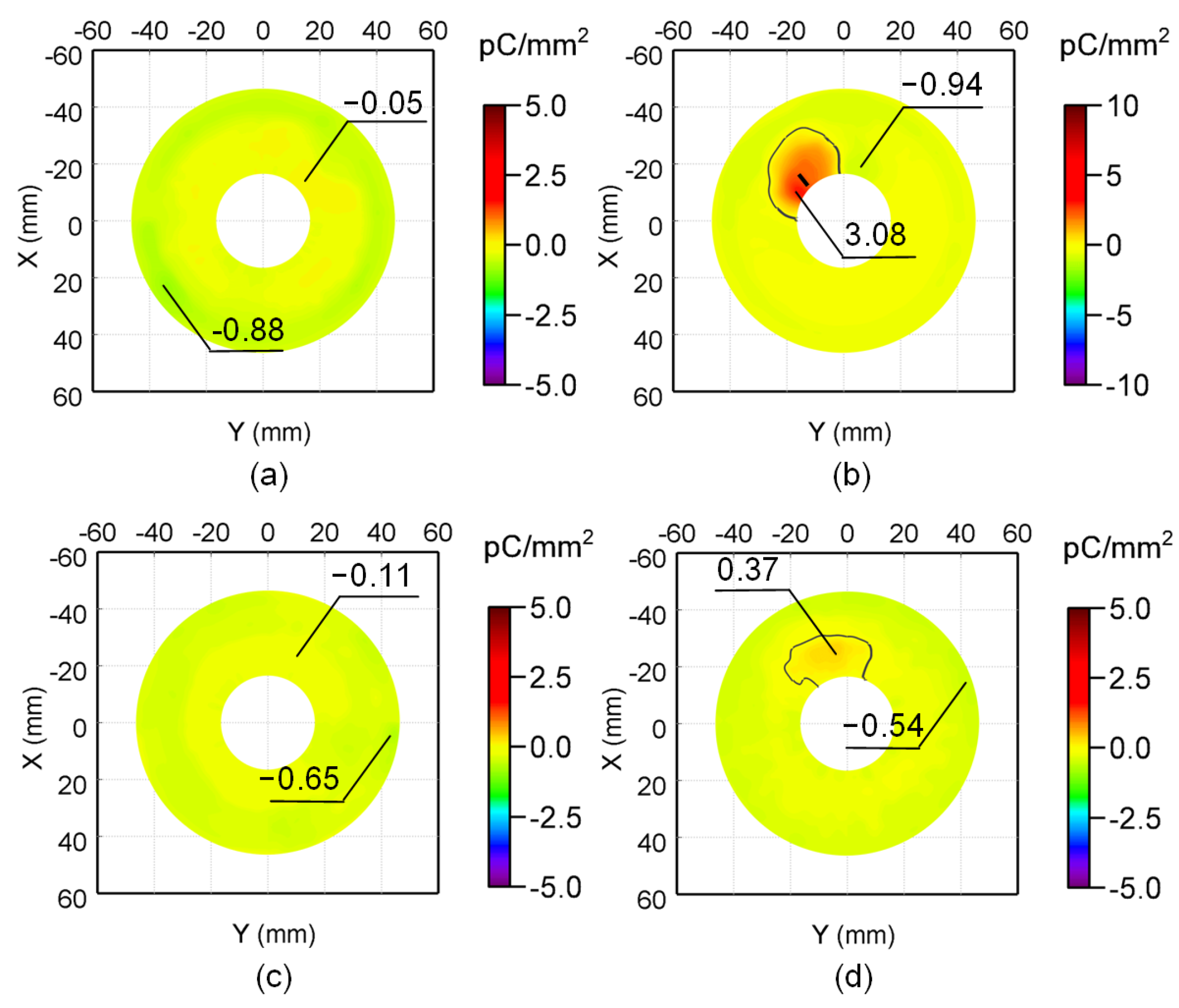
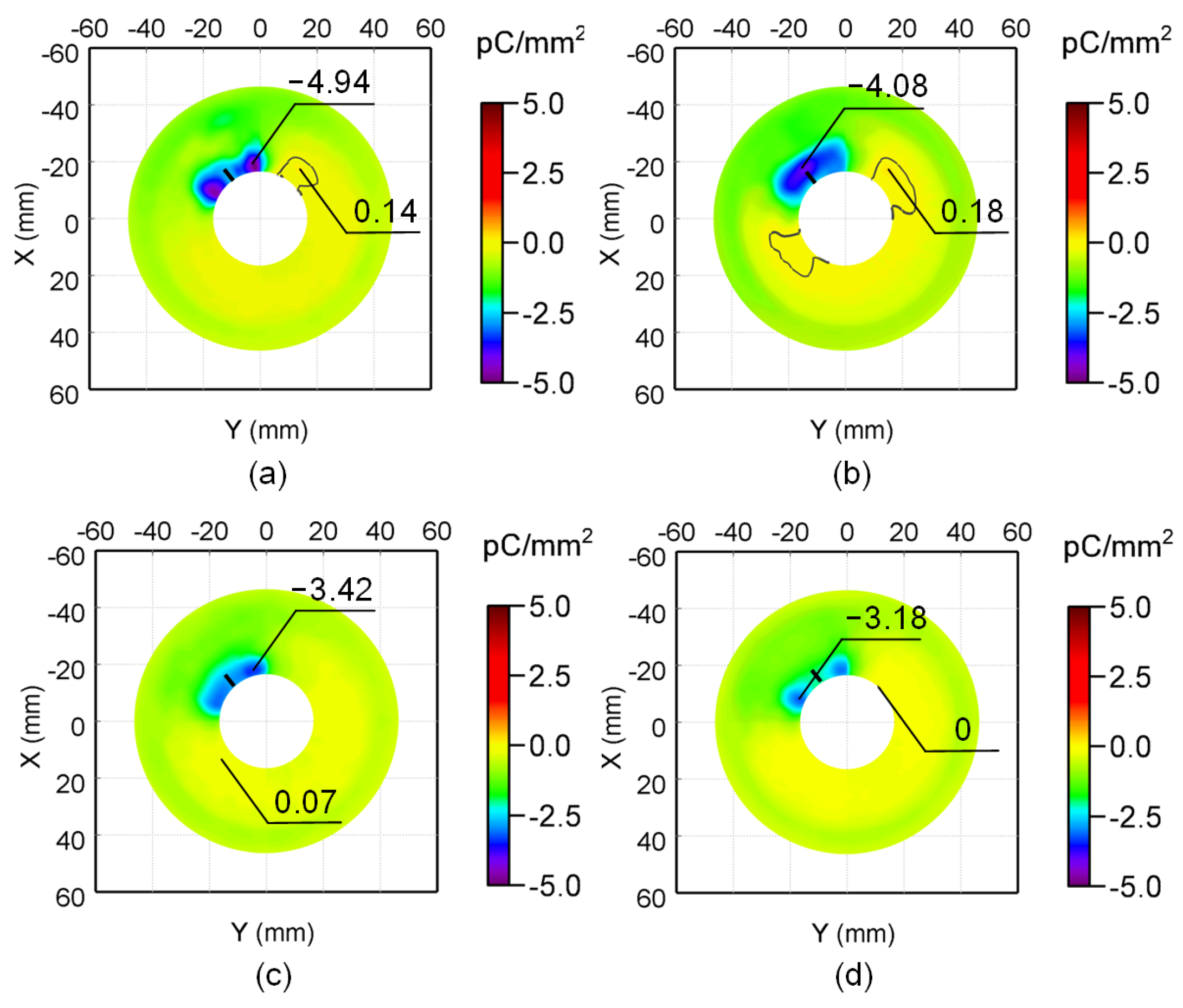
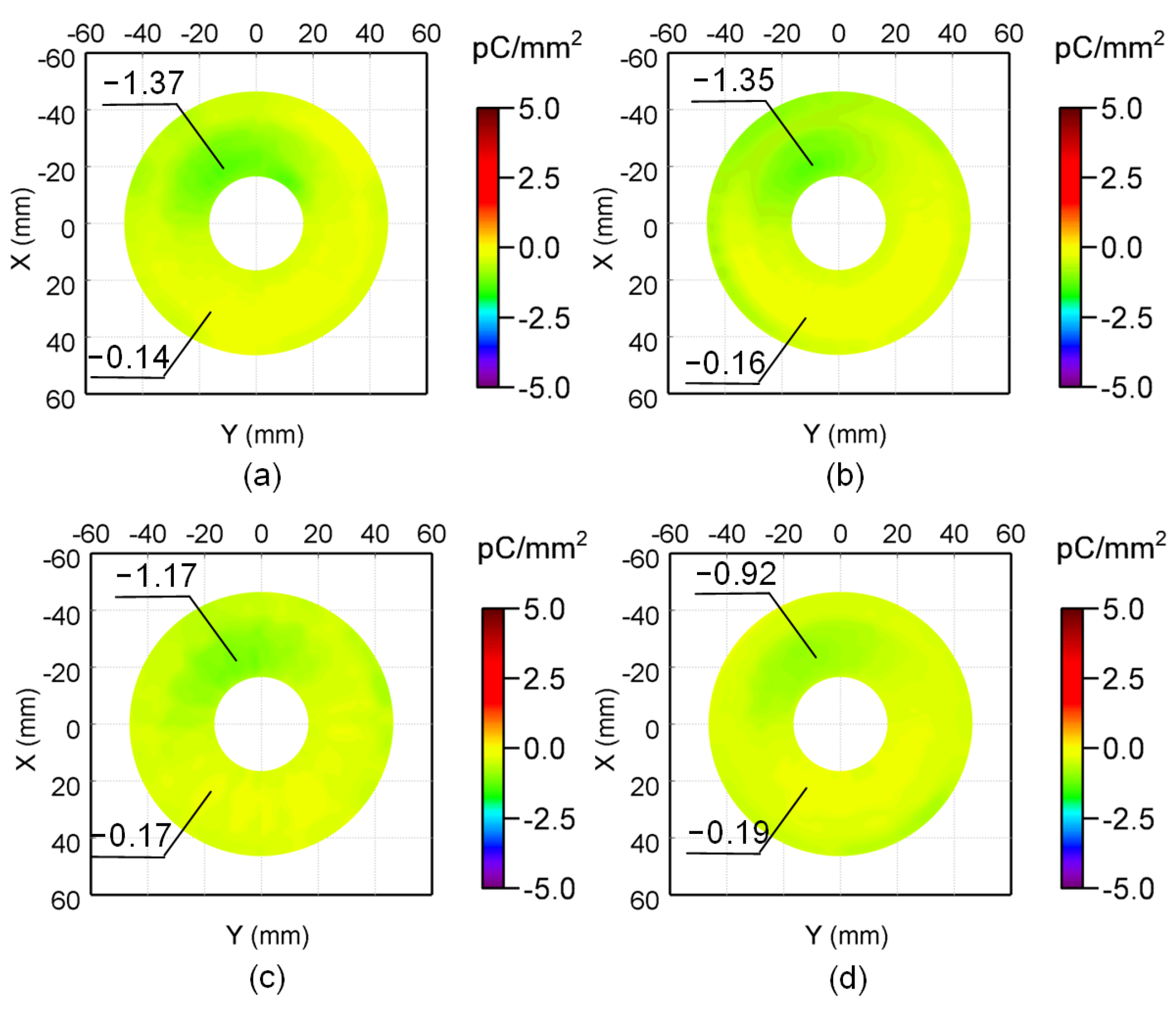
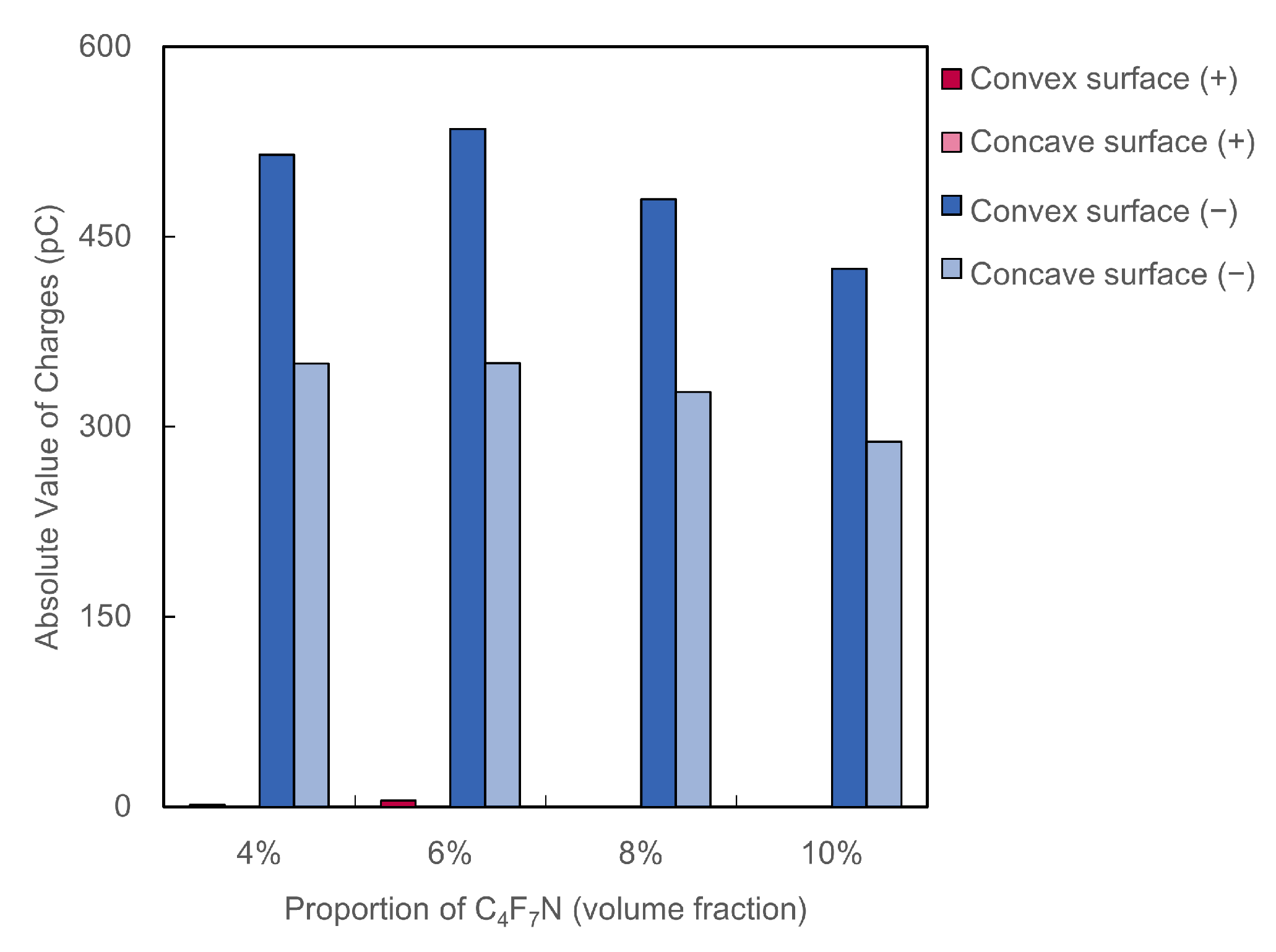
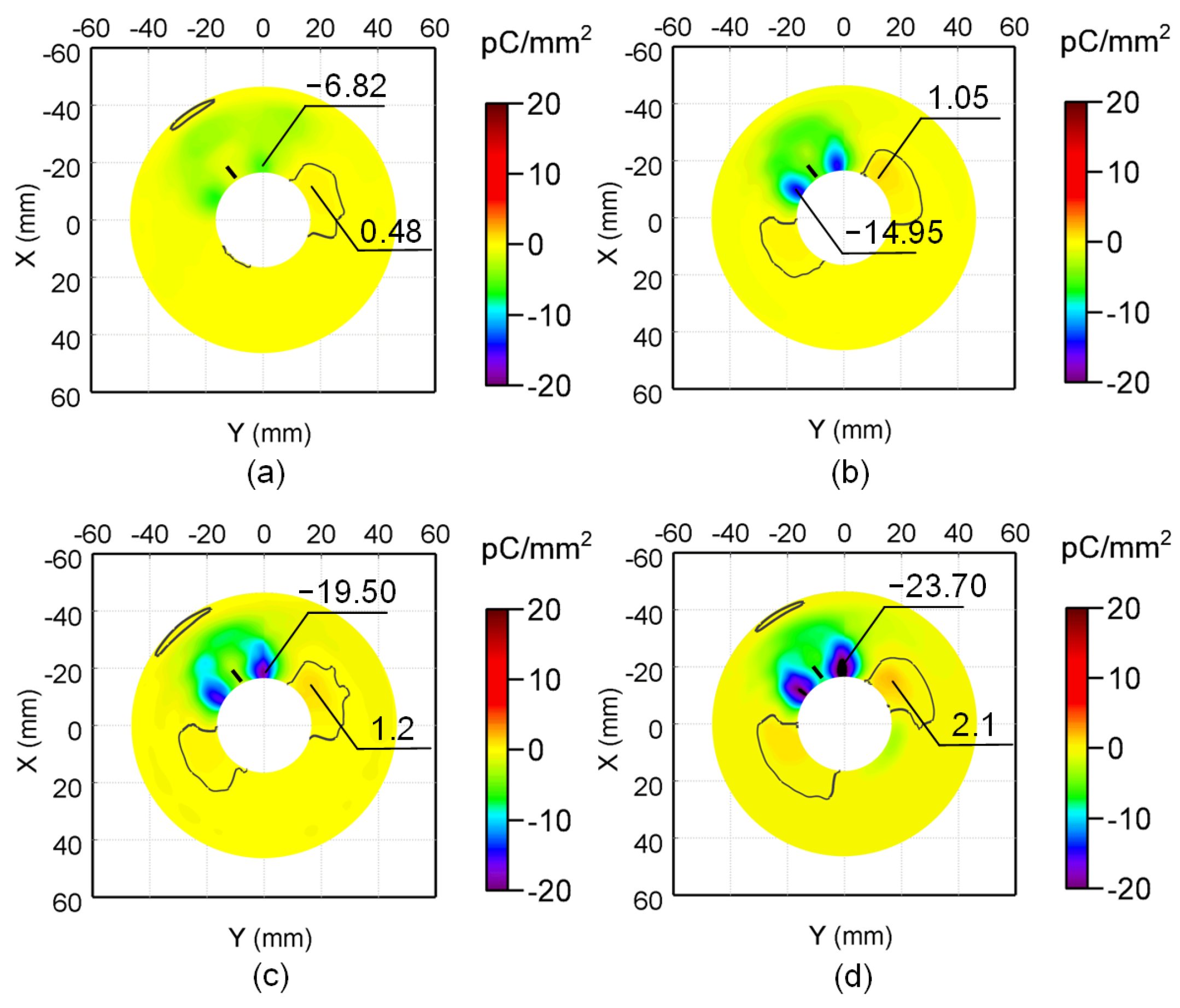
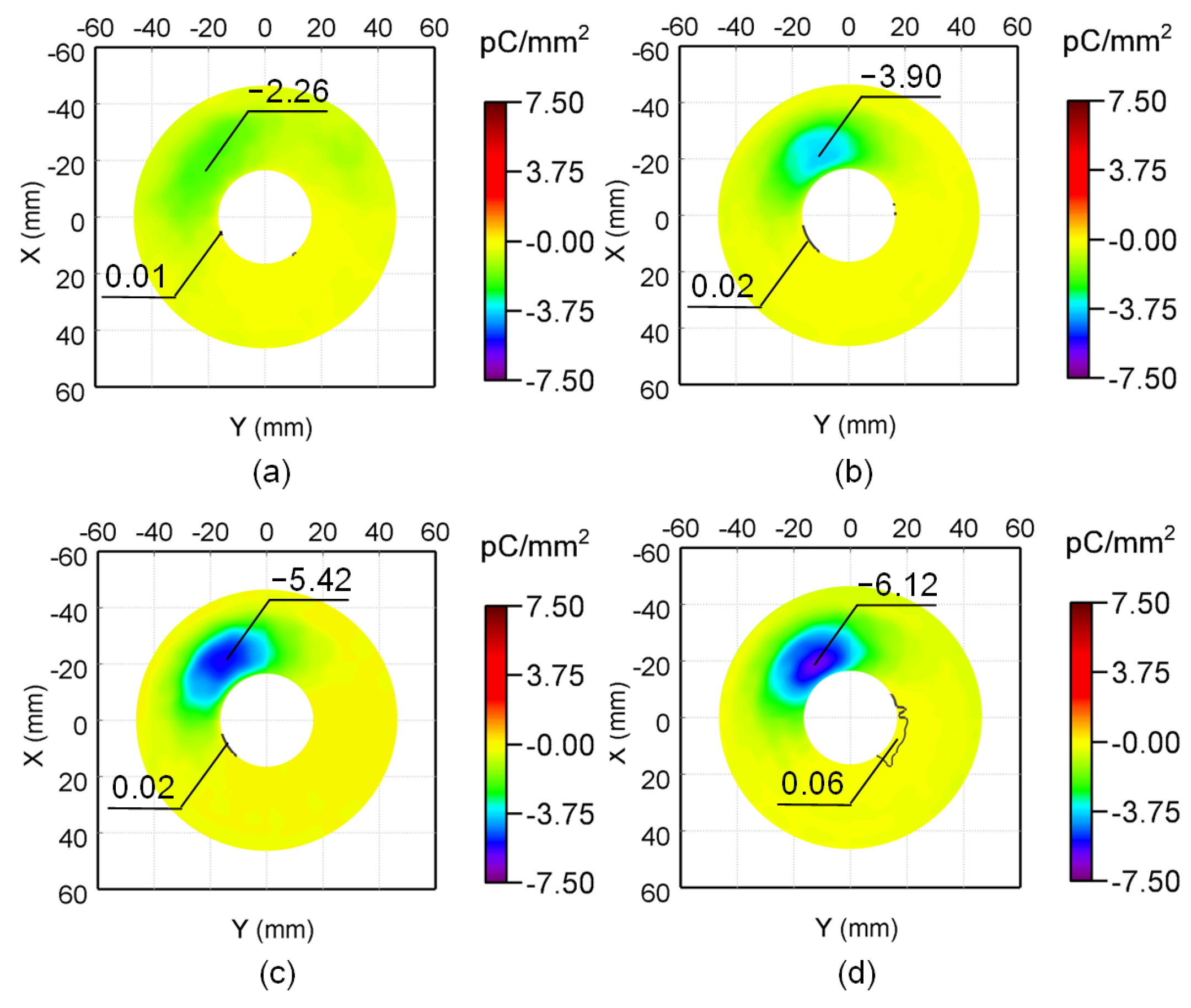


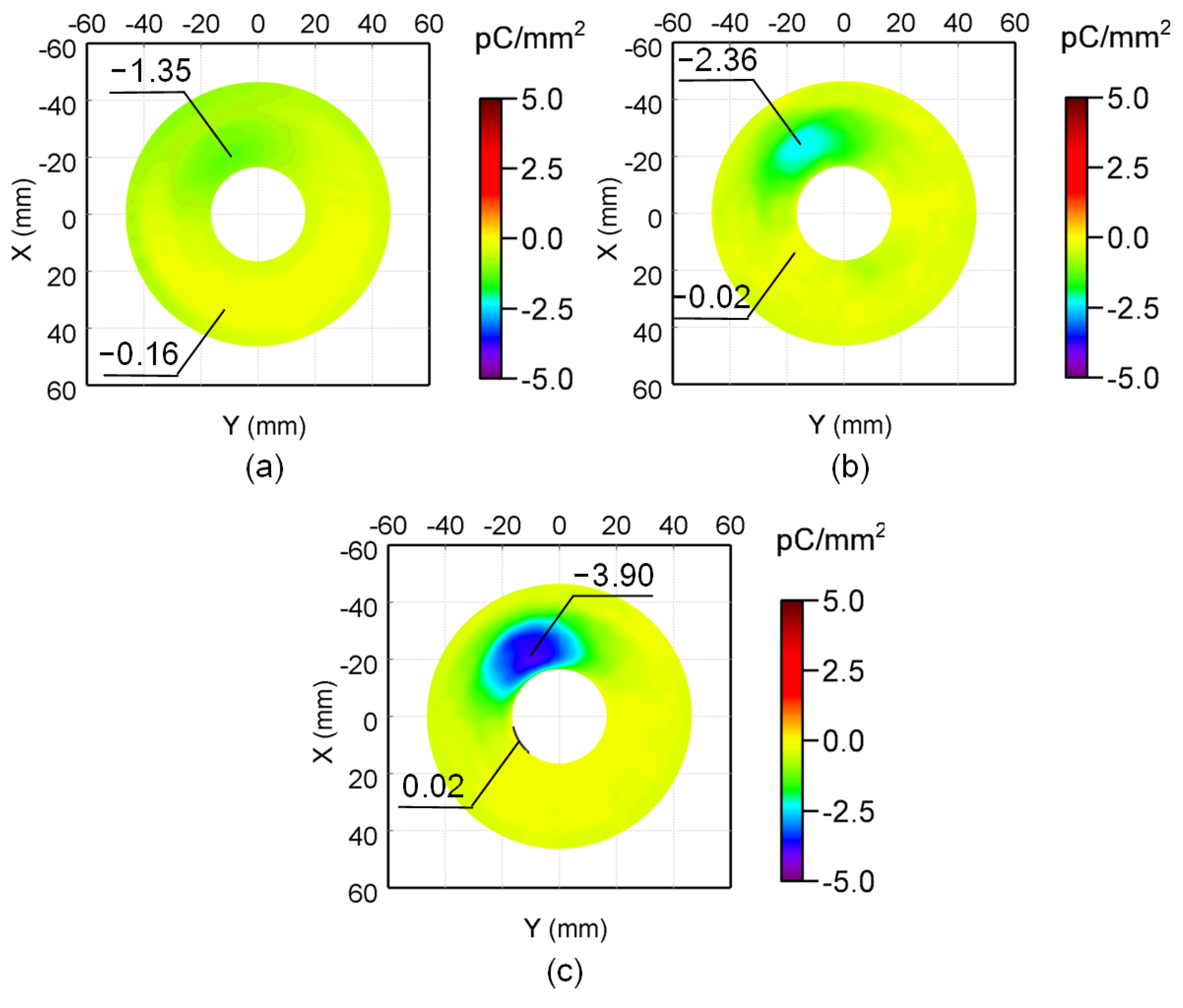
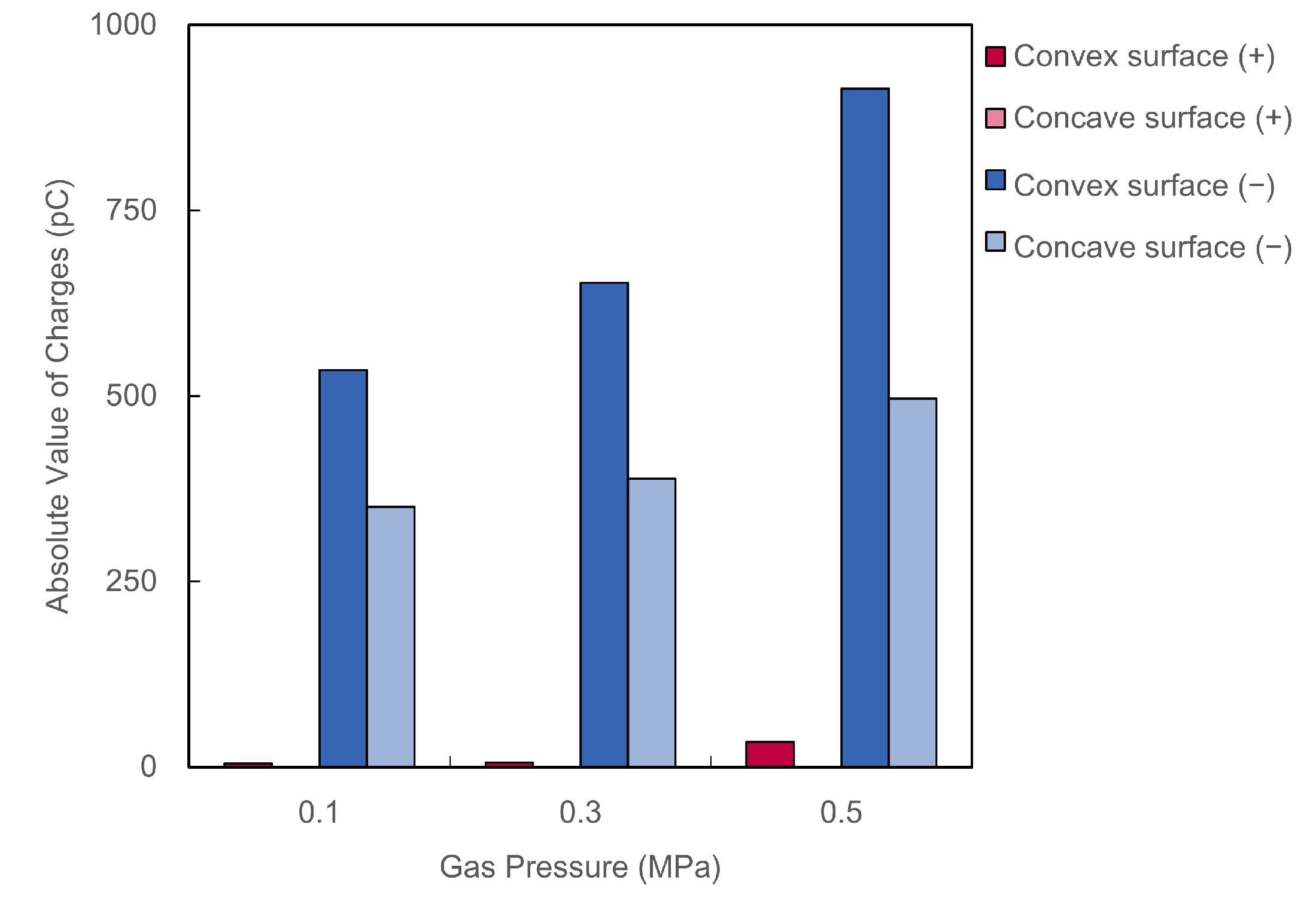
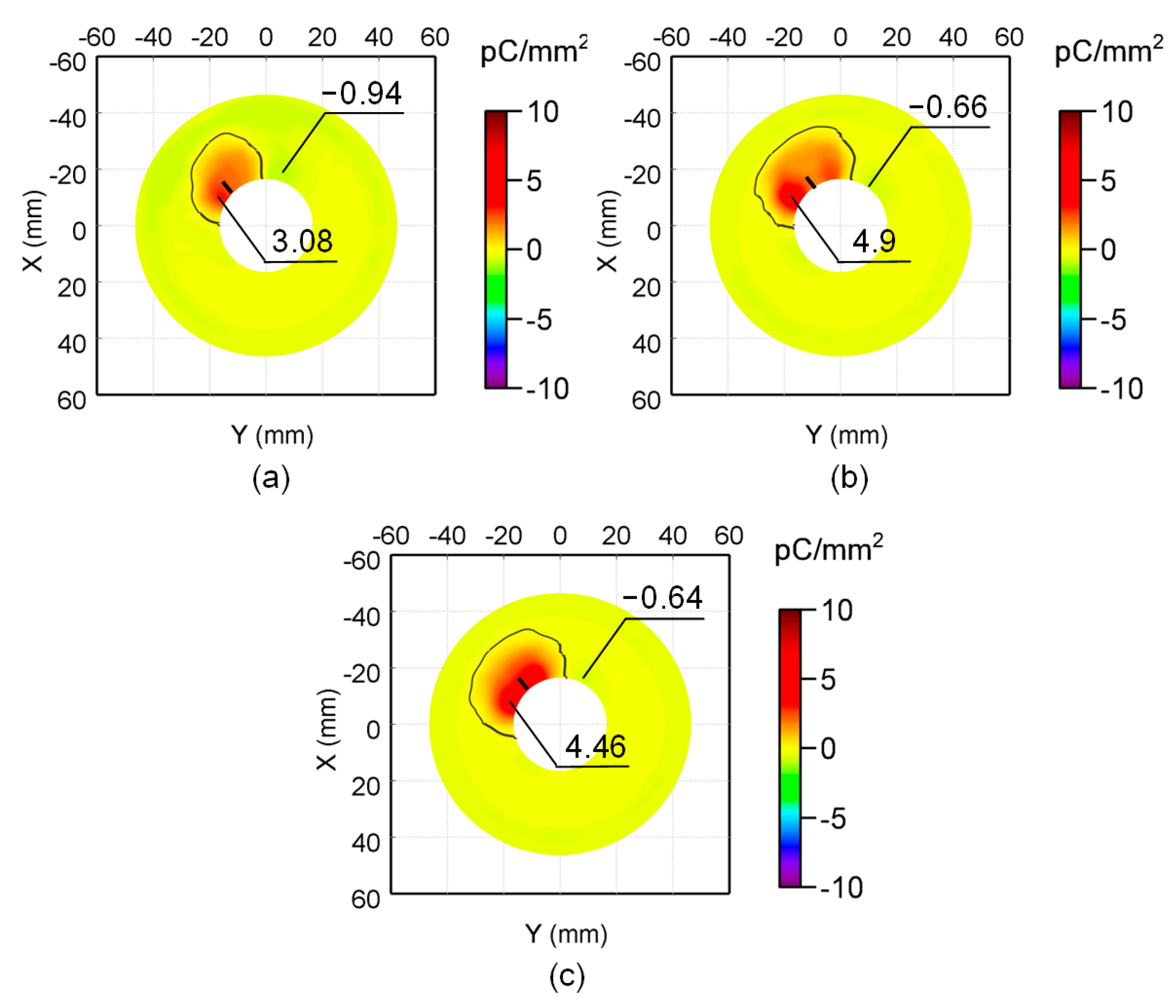
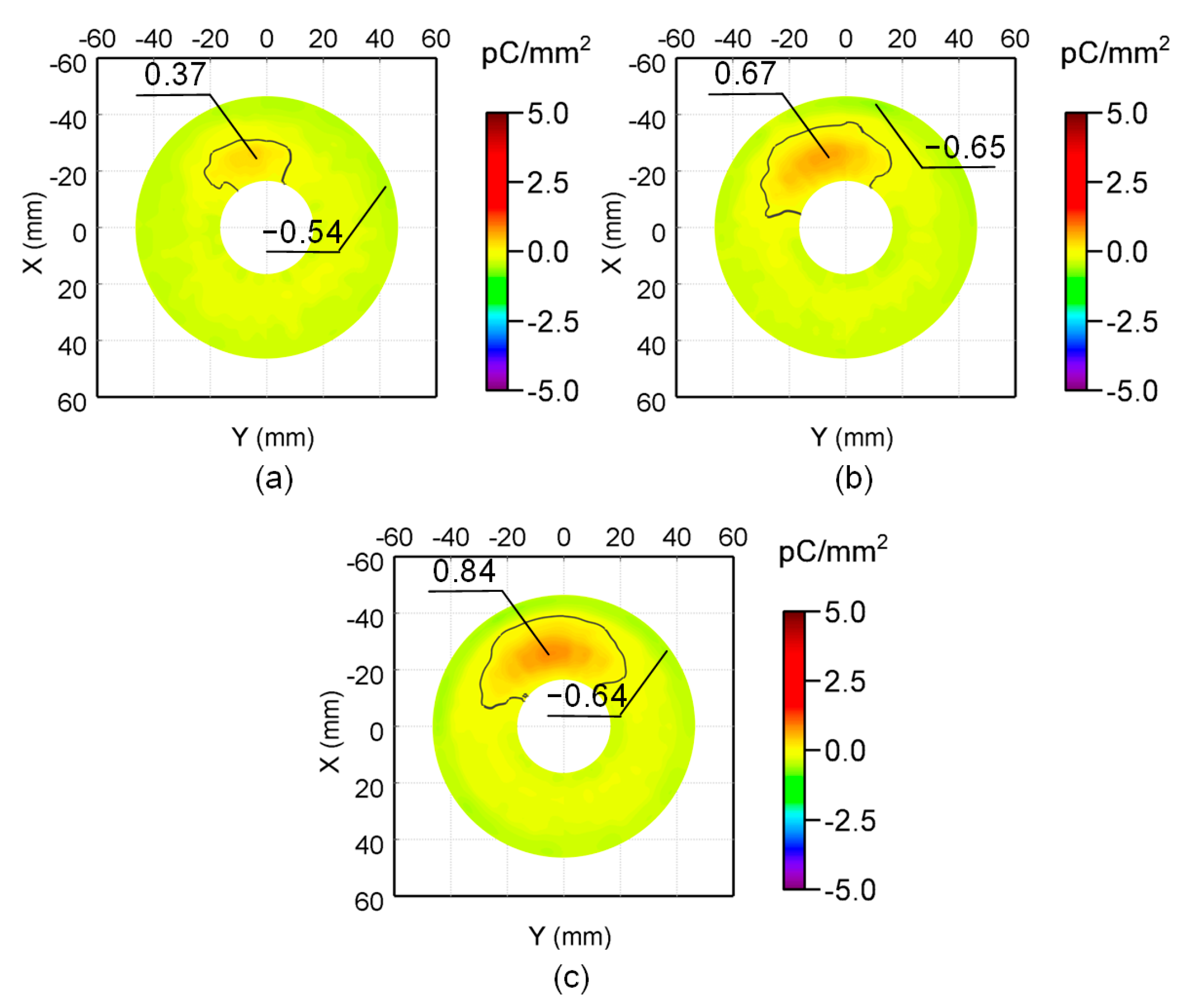
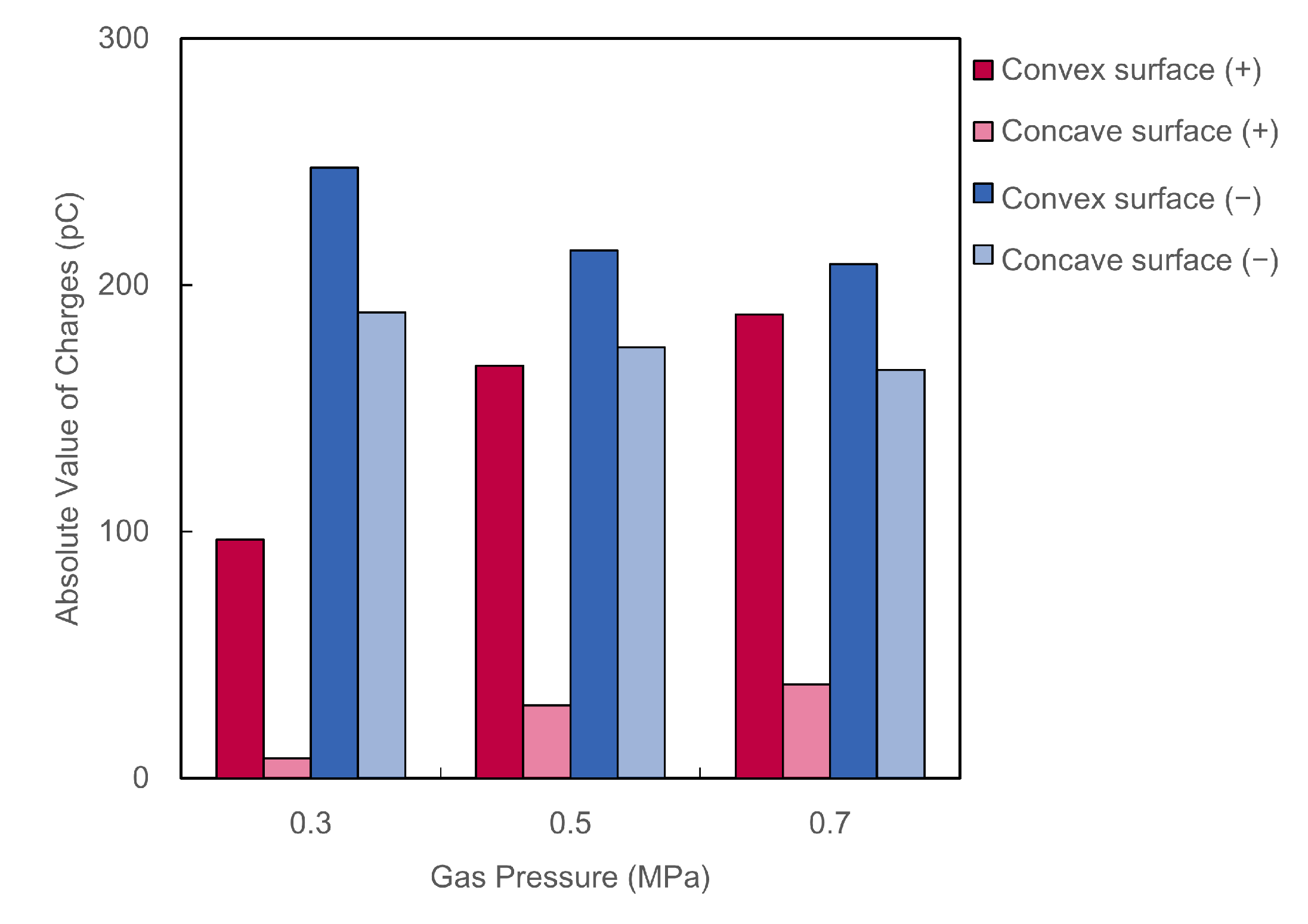


Disclaimer/Publisher’s Note: The statements, opinions and data contained in all publications are solely those of the individual author(s) and contributor(s) and not of MDPI and/or the editor(s). MDPI and/or the editor(s) disclaim responsibility for any injury to people or property resulting from any ideas, methods, instructions or products referred to in the content. |
© 2025 by the authors. Licensee MDPI, Basel, Switzerland. This article is an open access article distributed under the terms and conditions of the Creative Commons Attribution (CC BY) license (https://creativecommons.org/licenses/by/4.0/).
Share and Cite
Duan, X.; Zhu, C.; Shang, Q.; Zhang, Z.; Wang, K.; Gao, Y. Surface Charge Accumulation on Basin-Shape Insulator in Various Eco-Friendly Gases with Metal Particle Under AC Voltage. Energies 2025, 18, 2935. https://doi.org/10.3390/en18112935
Duan X, Zhu C, Shang Q, Zhang Z, Wang K, Gao Y. Surface Charge Accumulation on Basin-Shape Insulator in Various Eco-Friendly Gases with Metal Particle Under AC Voltage. Energies. 2025; 18(11):2935. https://doi.org/10.3390/en18112935
Chicago/Turabian StyleDuan, Xiaohui, Chuanyun Zhu, Qifeng Shang, Zhen Zhang, Kaiyuan Wang, and Yu Gao. 2025. "Surface Charge Accumulation on Basin-Shape Insulator in Various Eco-Friendly Gases with Metal Particle Under AC Voltage" Energies 18, no. 11: 2935. https://doi.org/10.3390/en18112935
APA StyleDuan, X., Zhu, C., Shang, Q., Zhang, Z., Wang, K., & Gao, Y. (2025). Surface Charge Accumulation on Basin-Shape Insulator in Various Eco-Friendly Gases with Metal Particle Under AC Voltage. Energies, 18(11), 2935. https://doi.org/10.3390/en18112935





